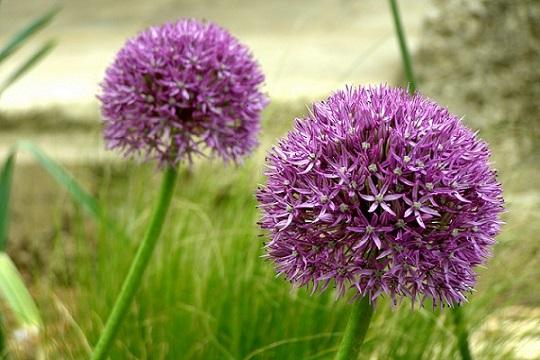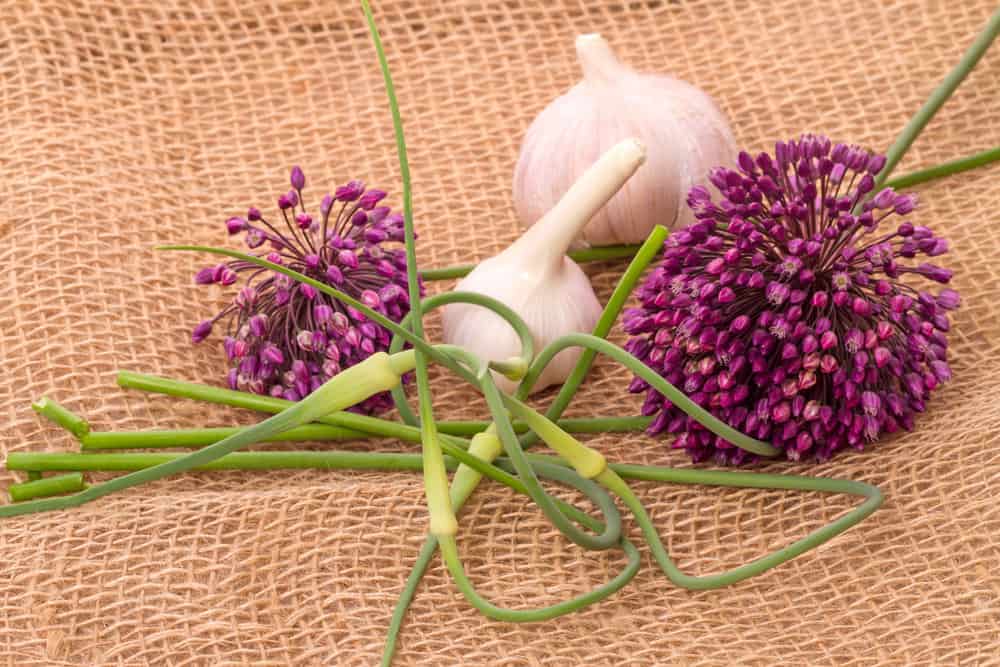Want to learn more about how to grow elephant garlic plants, including ways for growing elephant garlic and how to utilize elephant garlic plants? Read on! Let’s get started right away!

Elephant Garlic Plant
The elephant garlic (Allium ampeloprasum), though it resembles a large clove of garlic, is actually more closely linked to a leek than true garlic.
Elephant garlic is a peculiar tiny plant and it is more closely linked to leeks than garlic, despite its enormous appearance and moderate garlic flavor.
A huge bulb with five to six large cloves that are encircled by tiny bulblets develops underground.
Although Allium ampeloprasum is farmed all over the world and has naturalized in parts of them, it is thought to have originated in the Mediterranean region, possibly expanding into Asia. This elephant giant plant grows to a height of about 3 feet (1 m) from the bulb to the tip of the strap-like leaves.
How to Grow an Elephant Garlic Plant
Elephant garlic plant is sown in the fall for overwintering or in the late winter/early spring like regular garlic.
It is preferable to plant in the fall to give the plants a better chance of dividing into cloves rather than just producing a mono-bulb, especially if winters are generally warm or you can provide winter cover (you can get elephant garlic bulbs for planting online).
Pick a spot for your elephant garlic first.
While it is less sensitive to waterlogging in winter than conventional garlic, it is more adapted to moist environments. It will thrive in full light, a moist but largely free-draining environment.
The pH of the soil should be neutral, ranging from 6.0 to 7.0. It is a plant that can withstand somewhat strong winds but not exposure to the sea.
Prepare a growth space by adding some high-quality compost (produced at home in your yard) and/or other organic materials to the soil’s surface.
Elephant garlic does not thrive in areas with weeds, so make sure the space is weed-free.
Planting
To recover the huge cloves and the bulbils for replanting, carefully separate the elephant garlic bulbs.
(Be sure to know where you planted the bulbils so you can avoid trying to harvest them the first year and instead let them mature in place.)
Plant one clove at a time around 10 cm deep. To create the holes, use a dipper, a stick, a branch, or a plant into the furrow’s base. To avoid damaging the cloves, resist the urge to pound them with your hands into the ground.
Make sure the root end of the cloves is facing down and the pointy end is up. What is the best elephant garlic planting distance? To give them the room they need to grow, they should be at least 20 cm apart.
However, According to other sources, plant each clove with the pointed end up and bury it between 4 and 6 inches, separating the cloves between 8 and 12 inches to allow for some airflow between the plants.
Fill up the craters or furrows with soil and water.
Straw or other organic material can be used as a mulch to protect the soil, shield the roots from freezing, retain moisture, and control weed growth.
How to Care for Elephant Garlic Plant
After planting, elephant garlic requires little maintenance. The plant can be left alone, where it will expand into a clump of numerous flowering heads, rather than having to be divided or harvested every year.
These clusters can be left as decorations and pest deterrents like aphids, but they will eventually get too crowded and hinder the growth of the plant.
Light
Elephant garlic plants do best in full sun, which is defined as at least six hours of direct sunshine on most days. They can tolerate little shade, but growing these plants in the full sun usually results in larger bulbs.
Soil
Elephant garlic prefers soil that is loose, rich in organic matter, and pH-neutral. These plants require excellent soil drainage as well because they do not handle being waterlogged well.
Water
While they are actively growing, these plants require regular watering. Water the soil just enough so that it stays softly damp but not saturated.
The bulbs may perish from overwatering. It is better to water in the mornings so that the foliage can dry before dusk, as wet foliage might encourage the growth of fungus.
Temperature and Humidity
Elephant garlic can use some assistance, but it manages to endure the temperatures in its growing zones.
Ideal planting locations are those that are somewhat protected from brisk, severe winds. A layer of mulch placed around the plants can also aid in shielding the roots from soaring heat.
Plant rot and fungal development are both caused by high humidity. But they can be shielded from this by having enough air and soil drainage.
Fertilizer
Work some compost into the soil before planting your elephant garlic for a quality organic fertilizer. If you haven’t yet picked your bulbs the next year, add another layer of compost.
Taking care of the plants there is a must. Before we continue, you can also read about how to care for plants other than the elephant garlic plant. You can try reading this article: Effective Tips for Proper Catnip Plant Care.
How to Use Elephant Garlic Plant
Scapes can be refrigerated in a resealable bag, fresh, for up to a year. They can also be pickled, fermented, stir-fried, etc. Although it has a milder flavor than conventional garlic, the bulb itself can be utilized in the same way.
You may roast the entire bulb and use it as a spread on bread. It can be minced, sliced, sautéed, or eaten raw. The life of the garlic can be extended and its flavor enhanced by letting the bulb dry out for a few months in a cool, dry cellar. For up to ten months, hang the bulbs to dry and preserve them.
Conclusion
The elephant garlic plant has a huge bulb compared to regular garlic. It’s also extremely adaptable and can live in a variety of environments.
We’ve already shared with you how to grow, care for, and use elephant garlic pants. Make sure you save this page so you can return to learn more about this amazing garlic!

